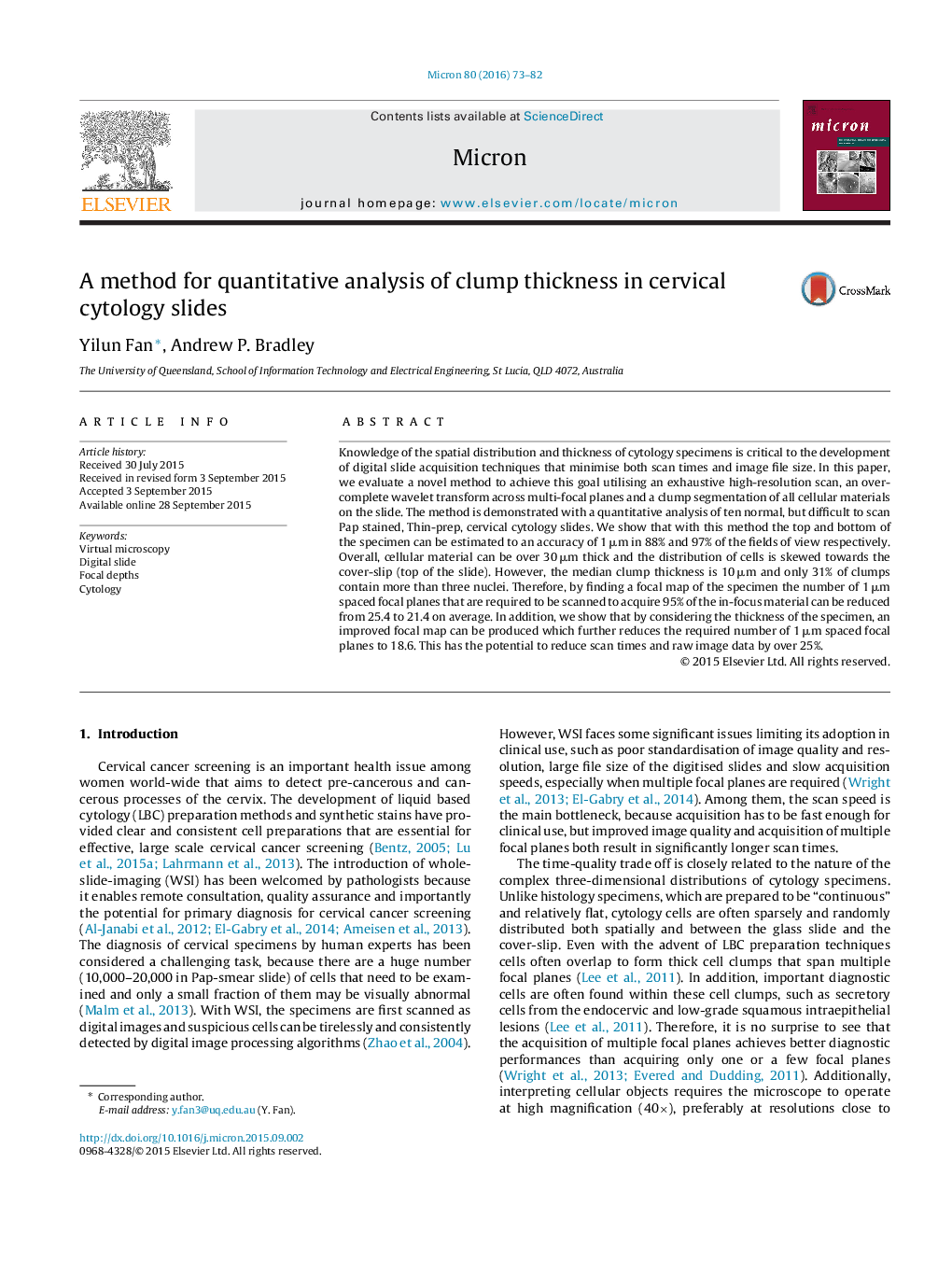| Article ID | Journal | Published Year | Pages | File Type |
|---|---|---|---|---|
| 7986514 | Micron | 2016 | 10 Pages |
Abstract
Knowledge of the spatial distribution and thickness of cytology specimens is critical to the development of digital slide acquisition techniques that minimise both scan times and image file size. In this paper, we evaluate a novel method to achieve this goal utilising an exhaustive high-resolution scan, an over-complete wavelet transform across multi-focal planes and a clump segmentation of all cellular materials on the slide. The method is demonstrated with a quantitative analysis of ten normal, but difficult to scan Pap stained, Thin-prep, cervical cytology slides. We show that with this method the top and bottom of the specimen can be estimated to an accuracy of 1 μm in 88% and 97% of the fields of view respectively. Overall, cellular material can be over 30 μm thick and the distribution of cells is skewed towards the cover-slip (top of the slide). However, the median clump thickness is 10 μm and only 31% of clumps contain more than three nuclei. Therefore, by finding a focal map of the specimen the number of 1 μm spaced focal planes that are required to be scanned to acquire 95% of the in-focus material can be reduced from 25.4 to 21.4 on average. In addition, we show that by considering the thickness of the specimen, an improved focal map can be produced which further reduces the required number of 1 μm spaced focal planes to 18.6. This has the potential to reduce scan times and raw image data by over 25%.
Keywords
Related Topics
Physical Sciences and Engineering
Materials Science
Materials Science (General)
Authors
Yilun Fan, Andrew P. Bradley,
